Nelson Lake and the surrounding woodlands, prairies and marshland are actively managed by the Kane County Forest Preserve District. A program of controlled burns, removal of exotic vegetation and planting of native trees and shrubs is returning this 1,285 acre (2 square miles) sanctuary to a semblance of its original condition.
The most extensive prairies occupy the northern and western portions of the preserve. This observation area is along the trail near the north entrance:

In early June, during our brief stay at our second home in northeastern Illinois I got out to Nelson Lake in hopes of seeing three particular bird species that I missed on my last trip here a few weeks ago. These were Henslow's Sparrow, Sedge Wren and Dickcissel.
The Dickcissels were fairly abundant, so I spent most of my time looking and listening for the endangered Henslow's Sparrows. This bird is extremely selective in choosing nesting areas and its loose colonies must relocate frequently. They require a layer of two or three years' accumulation of dead grass and will not build their nests an area that has been recently burned. The pattern of controlled burns assures a variety of habitats to accomodate the needs of different species. I thought I found one such area where the Henslow's Sparrows might nest, but was obviously wrong (I returned the next morning and heard at least 4 males singing but never caught sight of a single one).
Here are some images of Henslow's Sparrows (Ammodramus henslowii, 5 inches in length) from previous years. They are tiny sprites who put great effort into their songs which come out as little squeaky "s-lip," uttered at intervals of several seconds.
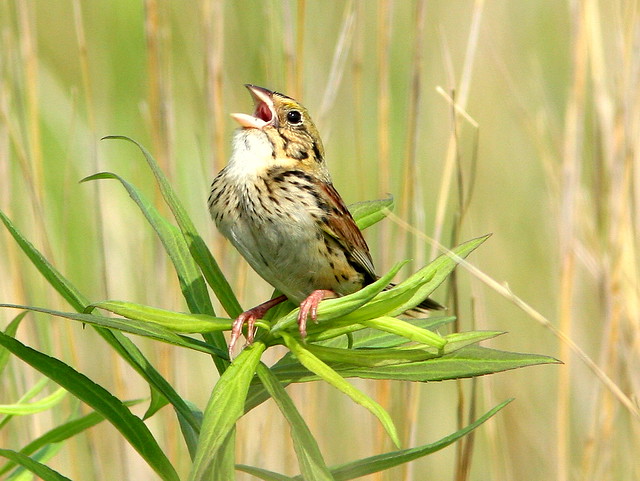
In good light the head of a Henslow's Sparrow appears greenish:
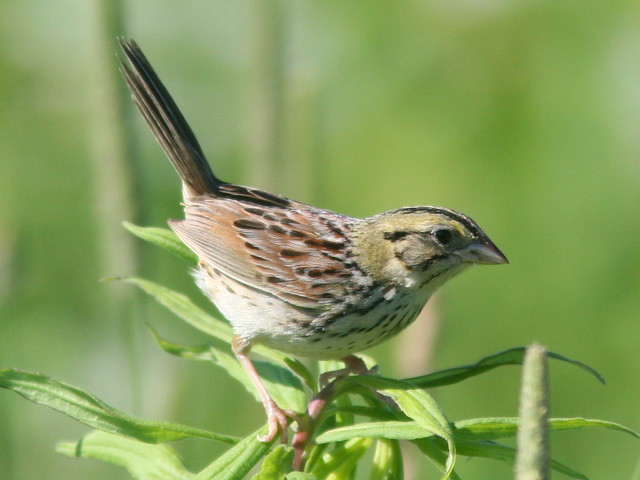
Moving furtively through the grass, it is difficult to keep one in focus.

Several other sparrow species nest in the prairies of Nelson Lake. In size and habits, the Grasshopper Sparrow (Ammodramus savannarum, 5 inches) most resembles the Henslow's but is more common. Individuals vary somewhat in plumage, but note its clear breast and lack of malar (mustache) stripe. This individual is brightly colored:
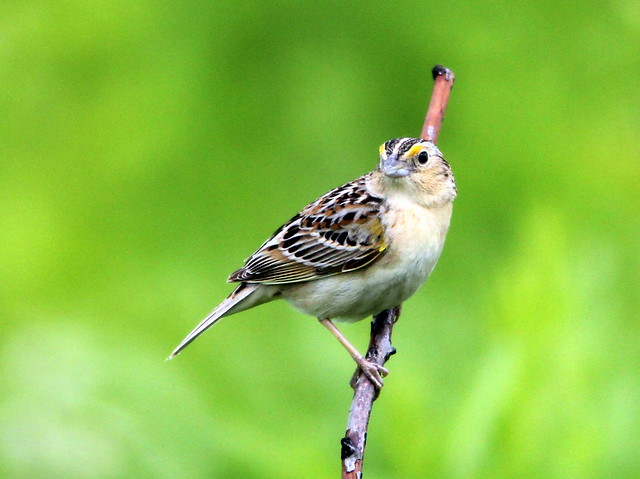
Another Grasshopper Sparrow appears more somber:
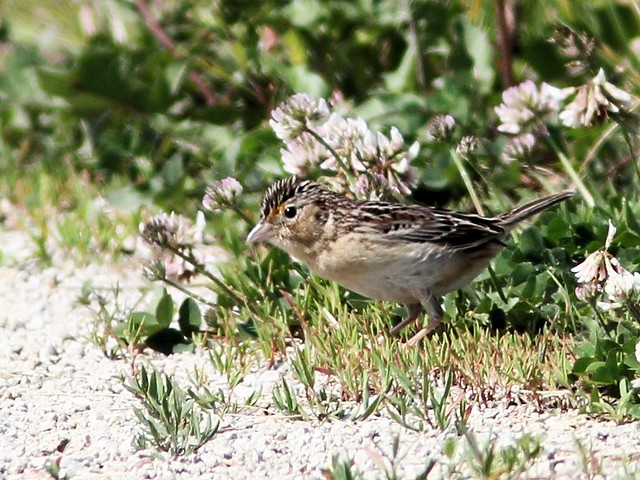
Savannah Sparrows are heavily streaked and a bit larger (5 1/2 inches):

Savannahs often sport a central breast spot and a bit of yellow in front of the eye, but these features are not always evident.

The even larger Song Sparrow (6 inches) has a longer tail is the most common sparrow on the prairie.
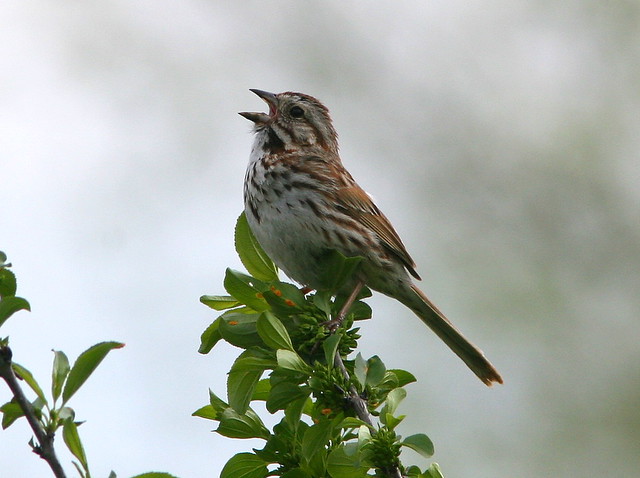
Field Sparrows (5 3/4 inches) breed in the brushy margins of the grasslands:
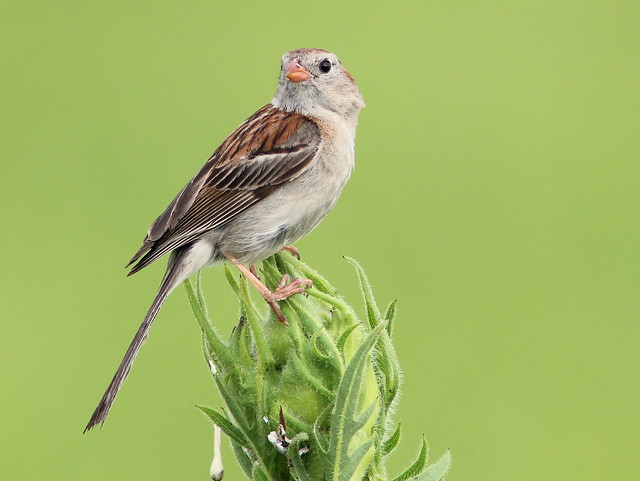
Sedge Wrens (4 1/2 inches) are fairly common but also change their breeding locations, as they prefer shorter grass and sedges, usually within sight of water. Actually I did not seek them out this time as I had spent at least two hours searching for Henslow's Sparrows. Sedge Wrens give away their location by their distinctive chattering song. They can be extremely elusive, singling along the trails, loudly but unseen. (I heard several Sedge Wrens the next day and caught sight of one but did not succeed in photographing any. These photos were taken during prior seasons at Nelson Lake).
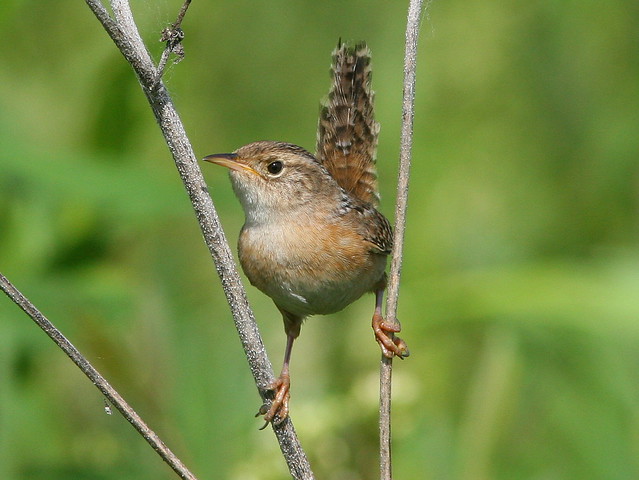
Typically, their tiny tails are bent forward over their backs.

I missed the Dickcissels earlier because they are very late migrants, usually not arriving at Nelson's Lake until early June. This time I found several males singing on their nesting territories.
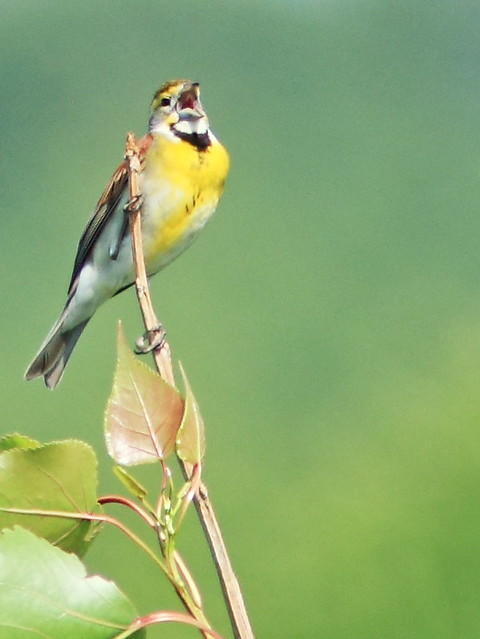
This Dickcissel chose a blue silo as a backdrop:
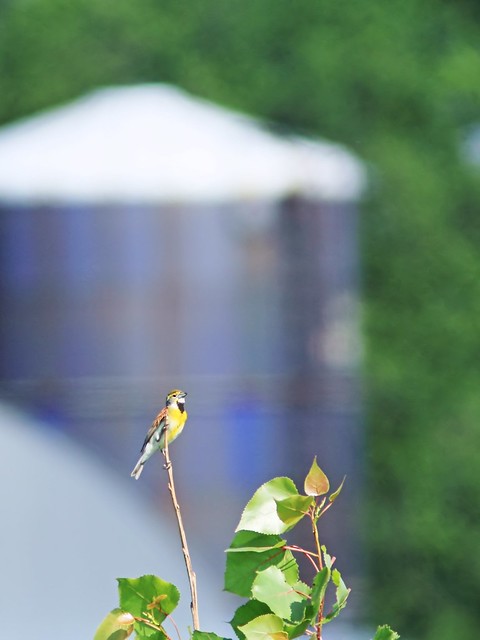
It burst into song:
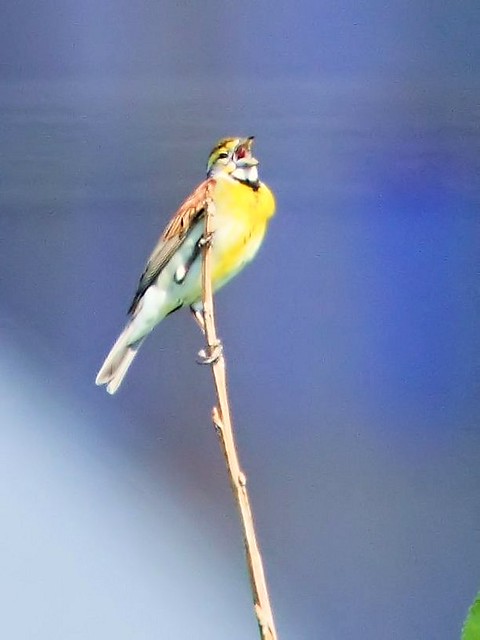
I accidentally caught this Dickcissel in flight, revealing its stunning bright chestnut wing coverts.
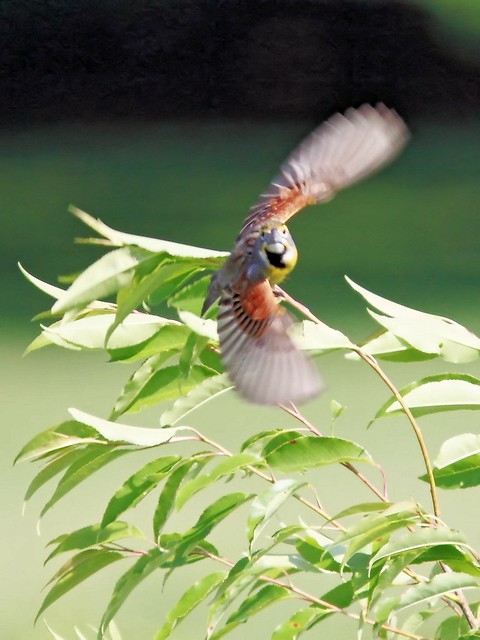
I will be away from Internet and cell phone service for much of these two weeks and prepared several posts in advance, but plan to get back with a "live" report as soon as possible.
we still have a few dickcissals here - they seem to be staying late this year. loved the sparrows and the wren!
ReplyDeleteBeautiful collection of sparrows and photos. The Dickcissel is a beauty! Great post! Happy weekend!
ReplyDeleteGreat shots - I can only imagine that these sparrows are a bit of a nightmare when you are a beginner!
ReplyDeleteCheers - Stewart M - Melbourne
Wonderful shots! You birders amaze me at your attention to the details that separate the different groups.
ReplyDeleteExcellent photography! I love the wren.
ReplyDeleteNice series of shots and birds.
ReplyDeleteTerrific post, Ken! Interesting (but sad) information on the prairies. Superb photos! Would love to get good looks at all of these!
ReplyDelete